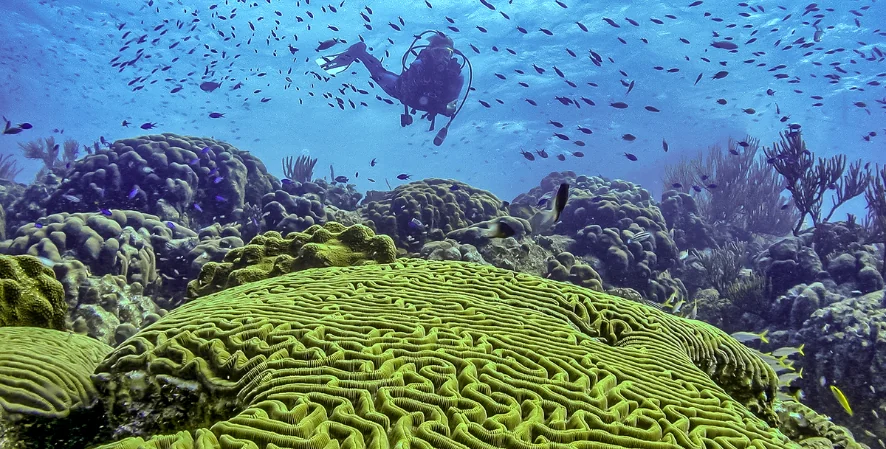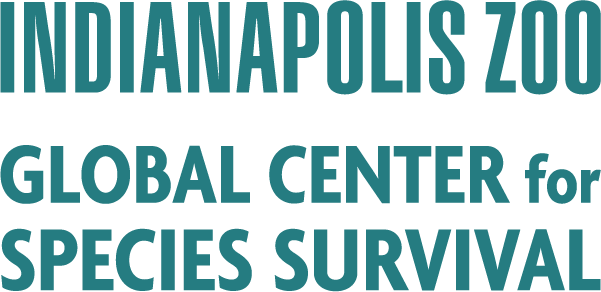
World Ocean Day 2022
Human lives depend on our shared ocean, and we aren’t alone. Earth’s entire biosphere is sustained by the sea – from the familiar bottlenose dolphin and humpback whale to the mysterious frilled shark and giant squid – we all need the ocean. But of all the species that rely on a healthy, bountiful ocean, humans are the only species with the power to protect it.
The ocean – and all the lives that depend on it – face serious threats, including overfishing, climate change and habitat loss. The challenges can feel overwhelming. You may wonder what you as an individual can do to combat such massive issues. Yes, we can all make better choices in our own homes, but it is through collective action that we will tackle the largest threats.
The theme of this year’s World Ocean Day is “Revitalization: Collective Action for the Ocean.” The ocean connects, sustains and supports us all – but its health is at a tipping point. We must work together to create a new relationship with the ocean that no longer depletes its bounty but instead restores its vibrancy and brings it new life. Revitalization is the goal; collective action is how we’ll make it happen.

Threat: Overfishing
Simply put, we are catching and consuming fish faster than they can reproduce. Some communities utilize traditional fishing methods, which is often referred to as artisanal fishing. Other fish are harvested by large-scale fishing operations. You might think the boats equipped with the latest technology are solely to blame for overfishing, but the reality is far more complex. There are examples of unsustainable fishing at every level, and the same is true for sustainable fishing. Regardless of how we catch fish, we are taking too many, too quickly. According to Monterey Bay Aquarium’s Seafood Watch, the percentage of fish stocks that are within biologically sustainable levels have decreased from 90% in 1974 to 65% in 2017.
Action: Sustainable Fishing
While some of us have food options that don’t include fish, it isn’t reasonable or ethical to insist all humans stop eating seafood. We can protect this essential source of food and employment by creating sustainable fisheries. Seafood Watch lays out several actions for managing fish populations:
- Stock assessments to assess and monitor fish population size
- Catch limits and gear restrictions
- Seasonal closures that limit when fisheries can target certain species
- Space-based closures which limit where fisheries can harvest
Learn More:
Threat: Climate Change
Climate change refers to long-term shifts in temperatures and weather patterns. Some of these shifts are natural, but human activities are largely responsible for the harmful shifts we are now experiencing. Much of it boils down to the release of too much carbon and methane in our atmosphere. This happens when we burn fossil fuels, releasing greenhouse gases that trap heat. Our landfills and livestock also contribute to methane emissions. And when we disrupt natural spaces, such as forests and wetlands, we release carbon that had been sequestered there by the plant life.
The United Nations reports that the Earth is now about 1.1°C warmer than it was in the late 1800s. The last decade (2011-2020) was the warmest on record, and we’re projected to reach around 3.2°C by the end of the century. We’re already experiencing the consequences in the form of hotter summers, droughts and wildfires. Polar ice is melting, sea levels are rising, and biodiversity is on the decline. These changes impact the future health and safety of all of Earth’s inhabitants, including humans.
The consequences of climate change are not always equally felt, nor are the causes equally produced. Just ten countries, including the United States, contribute 68% of emissions. So while we all have a responsibility to act, the greatest contributors to climate change have the greatest responsibility.
Action: Carbon Reduction
Humans must cut emissions. We can do this through investing in renewable sources of energy, such as solar and wind power. We can also support global frameworks that are already in place, such as the Sustainable Development Goals, the UN Framework Convention on Climate Change and the Paris Agreement.
Individual decisions matter, but it will take collective action to reach net zero emissions by 2050. Start by reducing your own carbon footprint, then work on advocating for local, regional and national policy changes and supporting businesses that offer climate-friendly products and services.
Learn More:
Threat: Habitat Loss
Habitat is where a species lives. For you, it is your home. For a seahorse, it is the ocean. When habitat is lost, it threatens the survival of species, yet more than half of marine key biodiversity areas are not protected, and dead zones are growing. Threats include coastal development, aquaculture, pollution and mining.
Action: Habitat Protection
When it comes to habitat protection, ocean conservationists often talk about Marine Protected Areas, or MPAs. The International Union for Conservation of Nature defines an MPA as, “a clearly defined geographical space, recognized, dedicated and managed, through legal or other effective means, to achieve the long-term conservation of nature with associated ecosystem services and cultural values.” It’s not enough to simply create off-limits zones of our ocean, MPAs are well-managed spaces that support rich biodiversity. Additionally, these spaces fair better when local stakeholders are included in the design and management. In addition to protecting parts of our ocean from human activity, we need to ensure that 100% of our ocean habitats are managed for sustainability and the maintenance of marine biodiversity.
Learn More:
Published June 8, 2022

